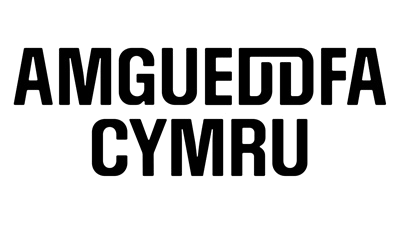Tall Tree in the Ear
DEACON, Richard
The sculptor has said of this work:
There’s a kind of elegance to Tall Tree in the Ear, a satisfactory elegance. It’s very simple. Simple, and complicated to look at.
It was part of a very important exhibition at Riverside Studios in 1984. The pieces were quite varied, in terms of their construction techniques, but they were all basically handmade in the studio, and tended to get discussed as an ensemble, rather than as of individual pieces. I was shortlisted for the Turner Prize that year, in part because of this exhibition at Riverside. It was, if you like, the breakthrough exhibition for me, and I was aware of that because there was a considerable amount of press and media attention to the work.
The two parts connect, but they’re not physically attached to each other. The loop goes underneath the steel part, and then, in the top edge of the triangular construction, there’s a missing piece, and it springs apart. You pull it apart slightly, and it acts like a kind of grip, so one part embraces the other part. They’re not physically connected, but they wrap together.
Formally, there’s three kinds of bending going on in this work. There’s the laminate bending, which you can’t see. There’s the steel bending which you can see, where the channel is made by assembling three pieces, two straight ones and one curved one, and with a succession of clips that hold a form together. And then the blue canvas is a straight sleeve – it’s not tailored to fit, so it ruckles and creases as it goes round the curve. And it was that ruckling and creasing as it goes round the curve that I was interested in. So I made it as a sock, or a sleeve, and slid it over it, and it was the difference between the inside and the outside as the material gathers on the inside that I thought was the interesting bit.
I was slightly anorexic as a teenager, and I found weight a bit disgusting, so that’s, I think, the reason why I didn’t like making heavy things. I thought they were dumb and stupid. The heavy bits of steel kind of were really unattractive to me. You couldn’t get inside them; they hurt you when they fell over; it had no lightness to it, in all sorts of ways. I didn’t like them. I didn’t want the work in the studio to be difficult to move around or to manipulate.
It was also connected to ideas about surface and what was inside things.
Even in St Martin’s …, I’d been interested in the way plywood was shaped. It was the combination of flexibility and fixed form that I thought was interesting. I was interested in the glue and the wood: what the glue did to the wood, and how the combination of the two made something fixed.
The steel channel in Tall Tree in the Ear is done by cutting out a flat profile from a piece of galvanised sheet. So this would be drawn, drawn directly on the galvanised sheet, and then cut out using a hand cutter. The strips that form the two sides of the channel were again hand-cut, either using a jigsaw against a straight edge or, in some instances, using a guillotine.
By putting a curve into something, it becomes rigid – but that rigidity doesn’t require internal support. You make a curve or a volume which encloses a certain amount, but doesn’t require an internal armature of any sort to get to its external form. So [these] two processes enabled me to construct volumes without having to build an inside – without having to make anything inside them.
[Source; extracts from an interview with Penelope Curtis, http://www.tate.org.uk/whats-on/tate-britain/exhibition/richard-deacon/richard-deacon-tall-tree-ear ]
We have a duty of care to all our audiences. This website draws on legacy collections data. We recognise that some of this information may be outdated or discriminatory and we're currently working to review our records. If you have any questions or comments on an artwork, please contact us.
Copyright statement provided by Amgueddfa Cymru – Museum Wales
Details
Collection
Amgueddfa Cymru – Museum Wales

Item Number
NMW A 24833
Creation/Production
DEACON, Richard
Date: 1983-1984
Acquisition
Purchase - ass. of DWT and private donor, 2015
Purchased with support from The Derek Williams Trust and a private donor
Techniques
Fine Art - sculpture
Material
Galvanised steel
Laminated wood
Canvas
Location
In store
Tags
Share
More like this
Amgueddfa Cymru - National Museum
DAVIDSON, Bruce
© Bruce Davidson / Magnum Photos / Amgueddfa Cymru - Museum Wales

Amgueddfa Cymru - National Museum
DAVIDSON, Bruce
© Bruce Davidson / Magnum Photos / Amgueddfa Cymru - Museum Wales

Amgueddfa Cymru - National Museum
Amgueddfa Cymru - National Museum
LONG, Richard
© Richard Long. All Rights Reserved. DACS 2025/Amgueddfa Cymru - Museum Wales

Amgueddfa Cymru - National Museum
RICHARDS, Ceri
© Estate of Ceri Richards. All Rights Reserved. DACS 2025/Amgueddfa Cymru - Museum Wales

Amgueddfa Cymru - National Museum
BOWLING, Frank
© Frank Bowling. All Rights Reserved. DACS 2025/Amgueddfa Cymru - Museum Wales

Amgueddfa Cymru - National Museum
Amgueddfa Cymru - National Museum
Amgueddfa Cymru - National Museum
Amgueddfa Cymru - National Museum
Amgueddfa Cymru - National Museum
Amgueddfa Cymru - National Museum
Amgueddfa Cymru - National Museum
Amgueddfa Cymru - National Museum
Amgueddfa Cymru - National Museum
Amgueddfa Cymru - National Museum
RICHARDS, Ceri
© Estate of Ceri Richards. All Rights Reserved. DACS 2025/Amgueddfa Cymru - Museum Wales

Amgueddfa Cymru - National Museum
Amgueddfa Cymru - National Museum
Amgueddfa Cymru - National Museum
CHAPMAN, W. J. (attributed to)
By permission of Amgueddfa Cymru — Museum Wales

Amgueddfa Cymru - National Museum
MORRIS, Cedric
© Estate of Cedric Morris. All Rights Reserved 2025/Bridgeman Images/Amgueddfa Cymru - Museum Wales
